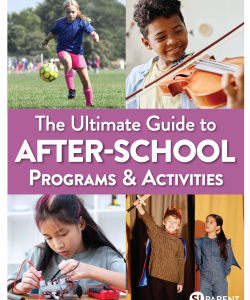Have you ever received a piece of seemingly junk mail addressed to your underage child that you simply discarded? Next time, dig a little deeper into the content. Why? Because a credit card or loan offer can be a warning sign that your child may be a victim of identity theft. Left undetected, your child could be connected to massive fraudulent debt and bad credit before they can even vote.
One in 40 families with children under 18 had at least one child whose personal information was compromised, according to a recent survey by the Identity Theft Assistance Center and the Javelin Strategy & Research group.
All it takes is a Social Security number – often applied for at birth – which can be paired with a different name, birth date and address to apply for credit. This is called a synthetic identity. And, for nearly 18 years, there is typically little risk of detection.
“The primary use of stolen personally identifiable information is for financial purposes,” said Trevor Buxton, fraud awareness and communications manager at PNC Bank. “Using the stolen Social Security number, identity thieves can open credit cards, rent apartments, buy cars, secure jobs, and apply for welfare or other government programs.”
Warning Signs of Identify Theft
Other warning signs your child may be a victim include:
- Notification by the IRS of unpaid taxes in your child’s name.
- Notification that a child’s Social Security number was used on another tax return.
- Receiving collection calls for a minor child
- Receiving bills in a child’s name for products or services not ordered or delivered.
- Declined for government benefits because benefits already are being paid to another account using the child’s Social Security number.
What to Do to Prevent Identity Theft
Parents can be proactive in protecting their child from identity theft:
- Never carry your child’s (or your) Social Security card in your wallet or purse. Keep it in a safe place, where it is not at risk of being stolen.
- Pay attention to forms from schools, doctor offices and others asking for personally identifiable information about your child. Opt out if you can or use the last four digits only.
- Shred all documents that show your child’s personally identifiable information before throwing them away, just as you do for your own documents.
- Most importantly: Request a credit report for your child annually, using the child’s Social Security number for reference. Every individual is entitled to one free copy of their credit report once every 12 months at www.annualcreditreport.com. If there is no credit history on record, then typically the child has not fallen prey to identity thieves. If there is a credit history for a minor child, he/she has mostly likely become a victim.
Read Next | Securing Our Schools
What to Do to if You Think Your Child Is a Victim
If you suspect your child may be a victim:
- Place a 90-day credit alert on your child’s file. There is no charge, but it must be renewed every 90 days. Contact one of the three credit reporting agencies who will then contact the other two:
- Equifax: www.equifax.com • 800-525-6285
- Experian: www.experian.com • 888-397-3742
- TransUnion: www.transunion.com • 800-680-7289
- Place a security freeze on the child’s credit to block all unauthorized credit inquiries. There is a cost involved, typically a one-time cost ranging from $2-$15 depending on the state. You also may be charged a similar fee to temporarily or permanently lift the freeze.
- File a police report.
- Contact businesses identified in your child’s credit report. Request that any account associated with your child’s Social Security number be closed as a fraudulent account.
- Contact all three credit reporting companies. Request the removal of all accounts, inquiries and collection notices associated with your child’s name and Social Security number.
Provided by PNC Bank • www.pnc.com

Read Next | Health and Wellness Resources for Your Staten Island Child





